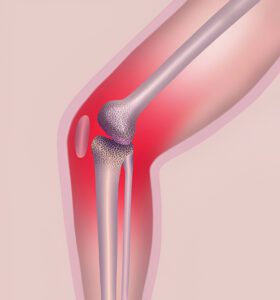The Meniscus Dilemma Repair or Remove for Long-Term Athletic Success

Knee injuries can be a nightmare for athletes. Of the various types, a torn meniscus is one of the most common and challenging. But what happens after the injury? Should an athlete opt for meniscus repair or removal? This decision is crucial, not just for immediate recovery but for long-term athletic performance and knee health. In this blog, we will explore the different aspects of meniscus injuries, the treatment options available, and the outcomes of repair versus removal. Whether you’re an athlete, a physical therapist, or an orthopedic surgeon, understanding these options can help you make informed decisions.
Understanding the Meniscus
The meniscus is a C-shaped piece of cartilage located in the knee joint. It acts as a shock absorber, providing stability and reducing friction between the thigh bone and shinbone. Athletes often put immense stress on their knees, making meniscus injuries common in sports like football, basketball, and soccer. Quick pivots, twists, and direct impact can all lead to tears in this important cartilage.
The meniscus plays a vital role in knee health. It distributes weight across the knee joint, helping to stabilize movements and protect the surrounding bones. When damaged, the knee can become unstable, leading to further injuries and a higher risk of arthritis.
Meniscus injuries typically occur due to acute trauma or degenerative changes over time. In athletes, sudden twists or direct impacts are the usual culprits. Understanding these causes is crucial for prevention and treatment planning.
Meniscus Repair Techniques

Arthroscopic meniscus repair is a minimally invasive surgical technique used to fix tears in the meniscus. Small incisions are made around the knee, and a camera, along with surgical tools, is inserted to stitch the tear. This approach allows for precise repairs and shorter recovery times.
Meniscus repair offers several advantages over removal. It preserves the meniscus, maintaining its shock-absorbing function, which can prevent future joint issues like arthritis. However, not all tears can be repaired—especially those in areas with poor blood supply. Risks include infection, stiffness, and a chance that the repair may not heal properly.
Successful meniscus repair requires careful consideration of the tear’s location, size, and pattern. Surgeons must evaluate these factors to determine the best surgical approach. The patient’s age, activity level, and overall knee health also play essential roles in deciding whether to repair or remove the meniscus.
Meniscus Removal Meniscectomy
A meniscectomy involves the partial or total removal of the damaged meniscus. This procedure is often chosen when a repair is not feasible. The goal is to alleviate pain and restore function quickly, allowing athletes to return to their sport sooner.
Meniscus removal can offer immediate relief from pain and restore knee function quickly. For athletes eager to get back in the game, this can be appealing. However, the long-term consequences of losing the meniscus’s protective function can lead to joint degeneration and arthritis.
While a meniscectomy can provide quick relief, the absence of the meniscus can have long-term implications. Without its protective cushioning, the knee joint is prone to increased wear and tear, leading to possible arthritis and decreased athletic performance over time.
Long-Term Outcomes
When comparing meniscus repair and removal, long-term outcomes vary. Repair, when successful, can preserve knee function and prevent arthritis, but it requires a longer recovery. Removal offers speedy pain relief but can lead to joint issues later.
Meniscus repair preserves the cartilage, maintaining its cushioning and stabilizing functions. This helps prevent arthritis and other joint problems in the long run, allowing athletes to maintain knee health and performance.
Meniscus removal can lead to joint degeneration over time. Without the meniscus, the knee may become more susceptible to arthritis, affecting long-term mobility and performance. Athletes must weigh these potential consequences against the short-term benefits.
Rehabilitation and Return to Play
Rehabilitation is a critical component of recovery for both meniscus repair and removal. A tailored rehab program can significantly impact the long-term success of the treatment and the athlete’s ability to return to their sport.
Rehabilitation after meniscus repair often includes physical therapy to regain strength, flexibility, and stability in the knee. The process can take several months, but a comprehensive program is essential for a full recovery and return to play.
For athletes who undergo meniscus removal, rehabilitation focuses on strengthening the surrounding muscles to support the knee joint. While the recovery might be quicker than repair, ongoing exercises are crucial to prevent further injury.
Case Studies and Expert Insights
Consider the case of David, a professional basketball player who chose meniscus repair. After a dedicated rehabilitation program, David returned to the court, with his knee function fully restored. His decision to repair the meniscus helped preserve his athletic career and knee health.
Orthopedic surgeons and physical therapists often emphasize the importance of individualized treatment. Each meniscus injury is unique, and a tailored approach can lead to the best outcomes. Surgeons consider factors like the type of tear, patient’s age, and activity level when recommending a course of action.
Renowned physical therapist Sarah Wilson advises athletes to carefully weigh the pros and cons of repair versus removal. Her experience shows that a thorough understanding of the injury and an athlete’s goals are crucial in determining the best treatment path.
A Balanced Approach to Meniscus Treatment in Sports Medicine
In conclusion, the choice between meniscus repair and removal is a complex decision that requires careful consideration of short-term relief and long-term consequences. Understanding the anatomy and function of the meniscus, the available surgical techniques, and the potential outcomes is essential for athletes, physical therapists, and orthopedic surgeons alike. Whether opting for repair or removal, rehabilitation plays a critical role in restoring knee function and ensuring a safe return to sports. By staying informed and seeking expert insights, athletes can make the best decisions for their knee health and athletic careers. Feel free to share your thoughts or experiences in the comments below, and explore more articles on knee health and sports medicine. If you have questions or need personalized advice, don’t hesitate to reach out to the healthcare professionals mentioned in this post.
